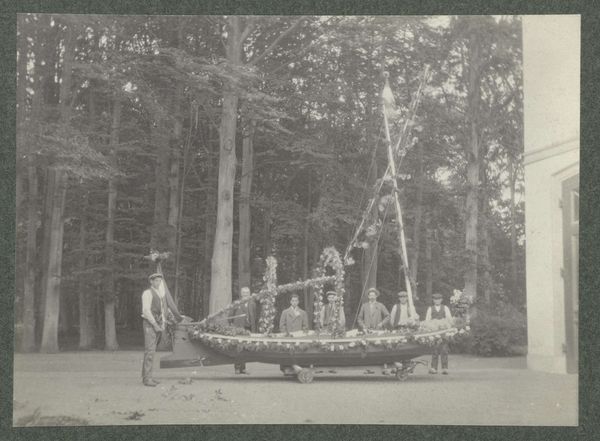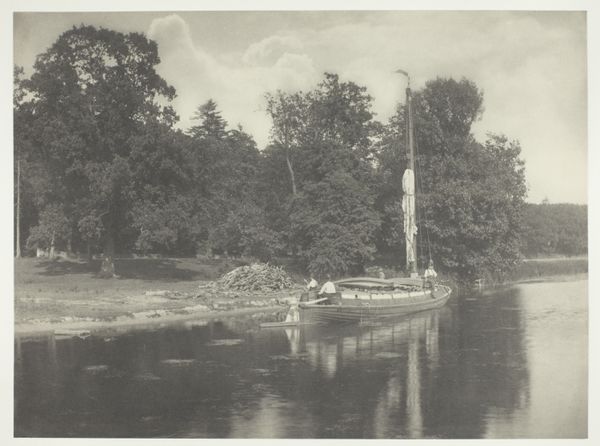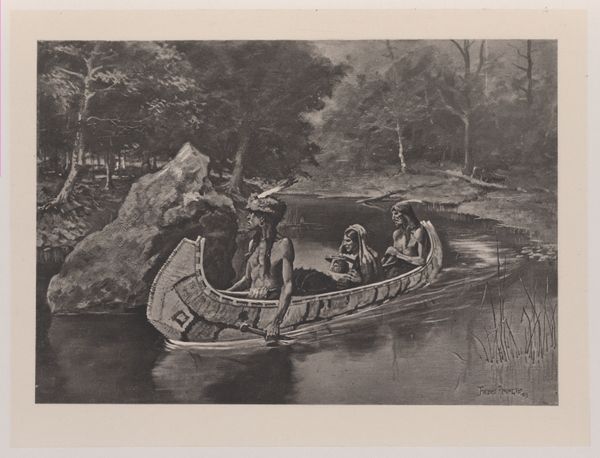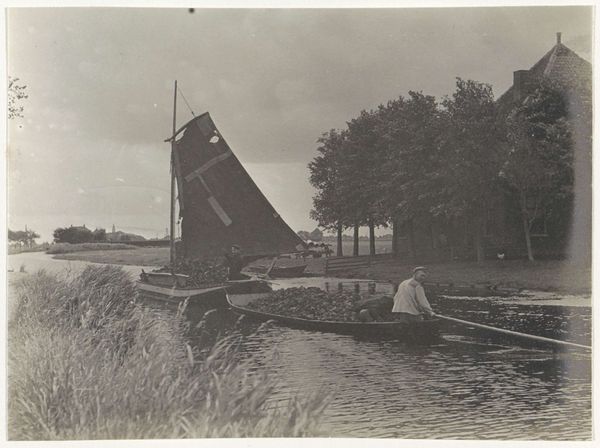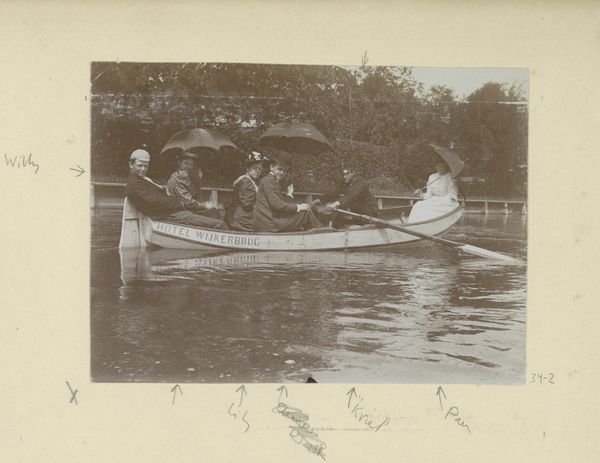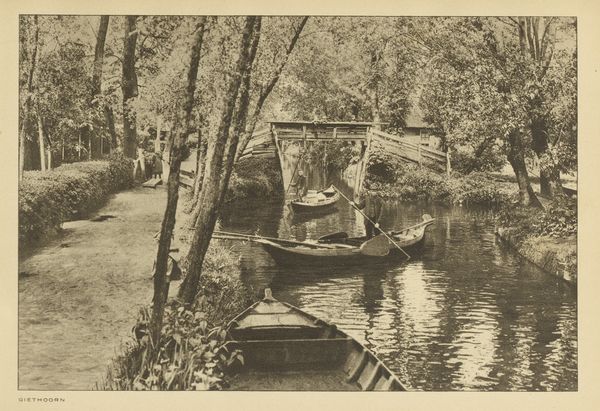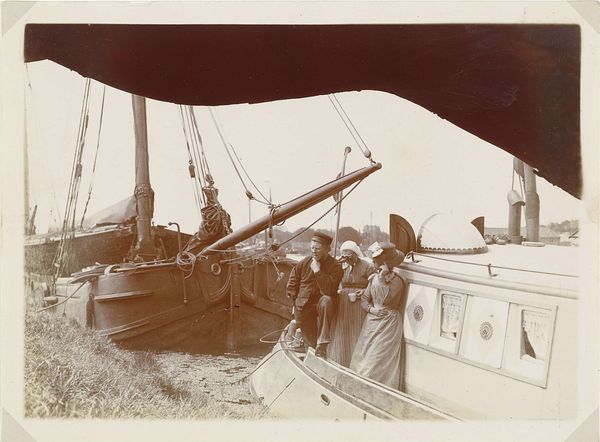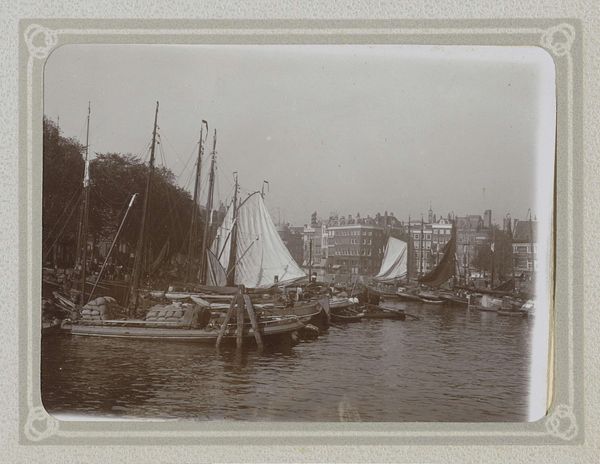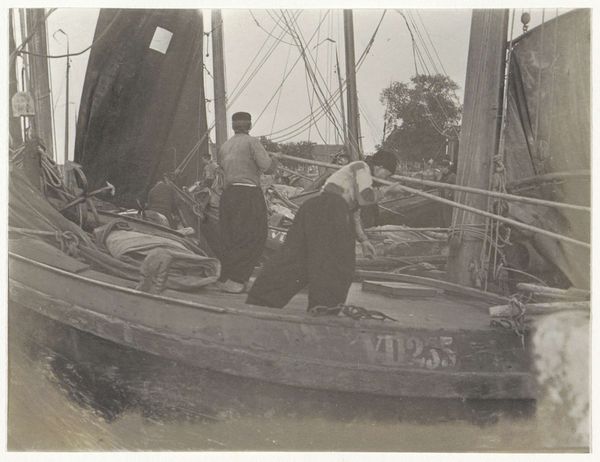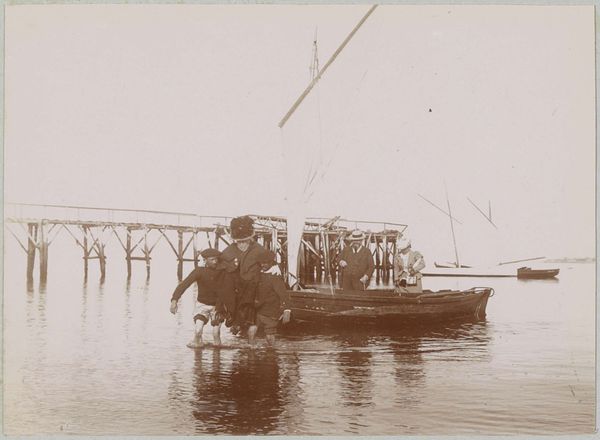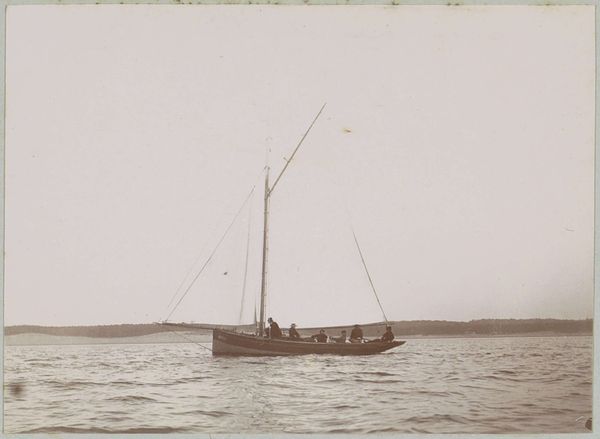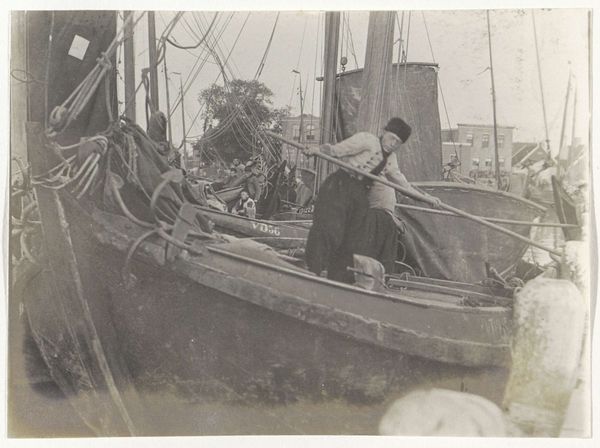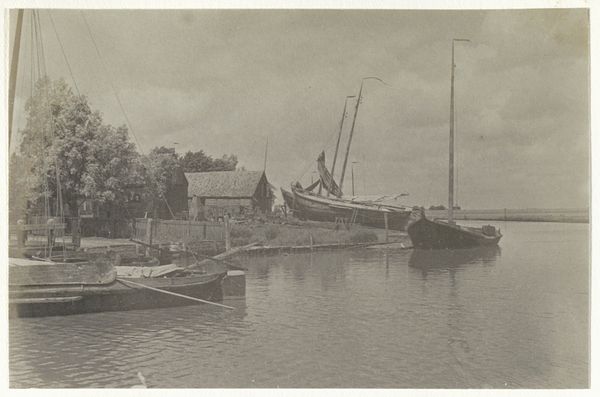
Familie Kessler in versierde boot in de vijver op Landgoed De Paauw c. 1913
0:00
0:00
print, photography, gelatin-silver-print
#
portrait
#
print photography
# print
#
landscape
#
photography
#
gelatin-silver-print
Dimensions: height 73 mm, width 98 mm, height 198 mm, width 263 mm
Copyright: Rijks Museum: Open Domain
Curator: Here we have "Familie Kessler in versierde boot in de vijver op Landgoed De Paauw," a gelatin-silver print dating back to circa 1913, currently held at the Rijksmuseum. Editor: It’s quite striking, really. The light is soft, giving the whole scene a dreamlike quality, a carefully constructed tableau vivant, a bourgeois family surrounded by blossoms... Curator: Precisely. Notice the labor involved in crafting this elaborate boat decoration. The garlands, the flagpole festooned with greenery...it suggests a community effort, or at least the employment of skilled labor to execute such an elaborate display. The photographic print itself, as a mass-producible medium, democratized portraiture even as it showcased an elite lifestyle. Editor: And those flowers... they speak of fragility, of fleeting beauty, but also of abundance. In a wider perspective, it’s interesting to observe this curated scene, seemingly embodying an almost naive vision of paradise. The flowers echo fertility, beauty, youth – concepts deeply woven into the symbolic idea of the perfect family idyll, popular at the time. Curator: Yes, consider the social context: the rise of leisure culture, the development of photographic technologies, the material wealth that allows for such ostentatious displays of floral decoration. Photography was becoming increasingly accessible. But here it's capturing and reinforcing the aspirations and the social hierarchy of that time. Editor: What does the body language of the family, neatly tucked in this boat say about them? Notice how stiff they are. This speaks of formality and perhaps even restricted freedoms; though posed within nature, they're still restrained by rigid expectations. In its visual way, the picture becomes a stage for identity, loaded with inherited meaning. Curator: Exactly. We tend to see a family portrait, but really it speaks about the larger social and economic relationships involved. It tells us something about what was valued in that period, both aesthetically and materially. Editor: After thinking about the underlying story hidden in those visual signs, the image's charm persists, reminding us that cultural products carry endless levels of significance waiting to be excavated. Curator: Indeed, viewing beyond its surface tells us plenty about social history, but also leaves us wondering about what escapes the photographic record.
Comments
No comments
Be the first to comment and join the conversation on the ultimate creative platform.
